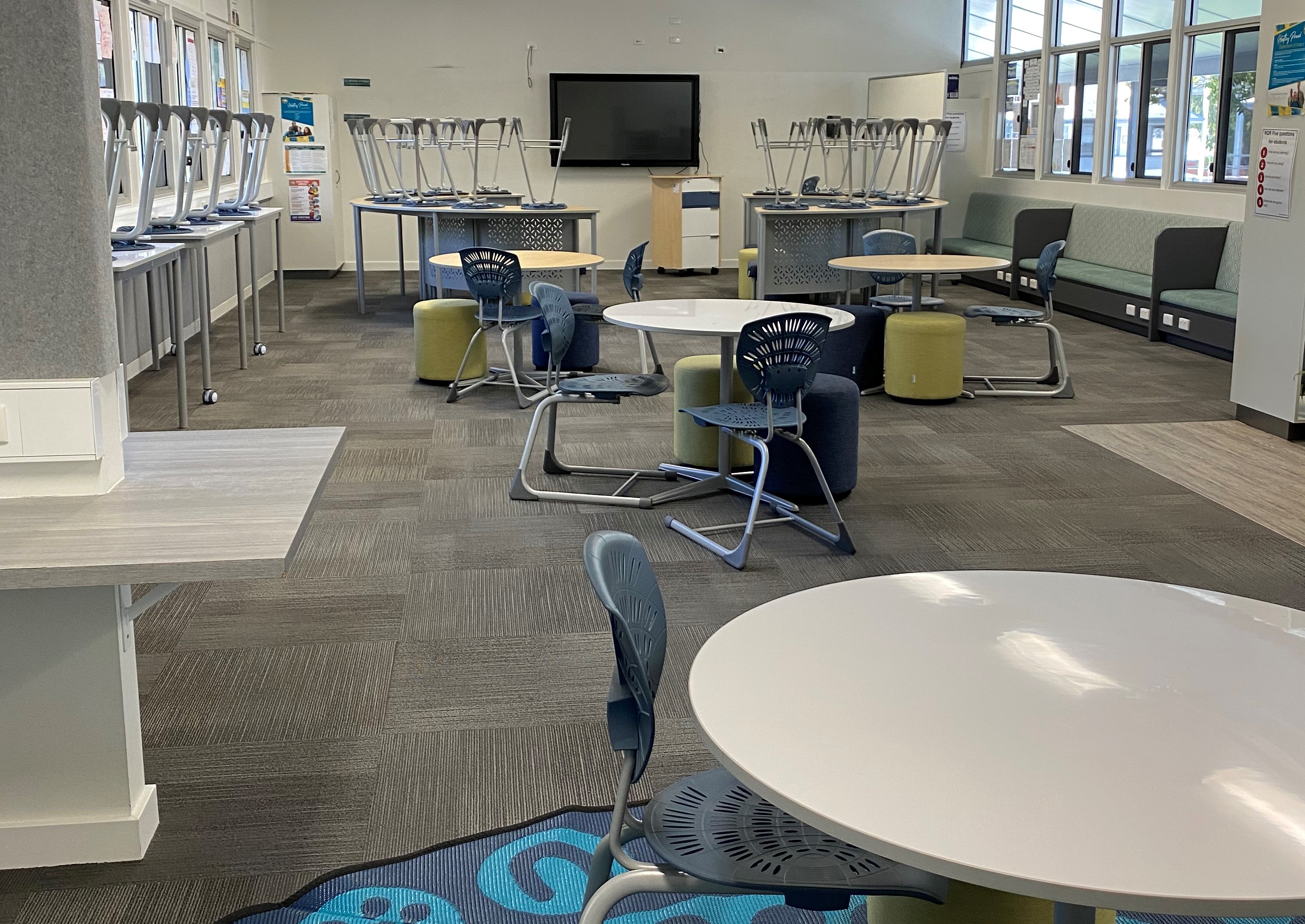
Why have a Summit Centre?
(Flexible Learning Space)
Both internationally and in Australia, it is widely accepted that the landscape of education needs to change to prepare students for this rapidly changing world. Educators need to consider what built learning environments including virtual environments and pedagogical practices best meet the needs of these 21st century learners and enhance outcomes (Kariippanon, Lancaster, Okely & Parrish, 2018, 2019b).
Flexible learning spaces typically include open spaces with various types of furniture and learning material options that can be arranged in different ways to allow for more dynamic teaching and learning (Cleveland & Fisher, 2014; Kariippanon, Lancaster, Okely & Parrish, 2018). These spaces have the potential to facilitate student engagement and motivation by using student centred teaching approaches and encourage students to be co-creators of their learning experiences. Students are empowered to choose where and how they learn, providing opportunity for innovation, creativity and developing problem
solving skills (Kariippanon, Lancaster, Okely & Parrish, 2019b).
Initial research into using these spaces and associated student centred pedagogies has been promising, including the potential to increase student engagement and motivation (Kariippanon, Lancaster, Okely & Parrish, 2018; Kariippanon, Lancaster, Okely & Parrish, 2019b) and improve social, emotional and physical wellbeing (Kariippanon, Lancaster, Okely & Parrish, 2018; Kariippanon, Lancaster, Okely & Parrish, 2019a).
What does teaching and learning look like in The Summit Centre?
The Australian Curriculum subjects and assessment will still be utilised in the Summit Centre, however the teaching and learning will look a little different. The classroom has different spaces, learning materials and furniture that can be moved by students and teachers to suit the type of learning and needs at the time. This will enable a greater opportunity for inquiry and problem based learning and adaption for personalised learning and wellbeing needs. Students will have more flexibility to choose where and how they learn. The Summit Centre will utilised the work of David Thornburg (2004) who discusses the following archetypal learning spaces:
 Campfire: This is a space where the community gathers to learn from an expert. For thousands of years wisdom has been passed to the next generation through storytelling. Whilst this is not the only mechanism for teaching, it is an important one and it usually occurred around a sacred place such as a campfire. In our learning space, expert can include, class teachers, guest speakers, elders or students.
Campfire: This is a space where the community gathers to learn from an expert. For thousands of years wisdom has been passed to the next generation through storytelling. Whilst this is not the only mechanism for teaching, it is an important one and it usually occurred around a sacred place such as a campfire. In our learning space, expert can include, class teachers, guest speakers, elders or students.
Watering Hole: This is a space where community members can gather to collaborate, discuss and share information, dreams and ideas. Historically, people around the planet needed to gather at a central source of water. Often there were multiple groups who visited the waterhole who shared and learnt news from others. In this space, students are both learners and teachers at the same time.

Cave: This space is for individuals to reflect, think and complete individual work. Throughout history, different communities around our planet have recognised the importance for its members to spend time alone with their own thoughts. Isolation took place in different places including forests, wilderness or caves to gain insight or perspective. In this space, students work privately and quietly allowing for engagement in practices like metacognition or mindfulness.
Life: This space is about the meaningful application of what has been learned. Through this space, comes the demonstration of the knowledge or skill as well as the potential realisation that further work needs to be done. Life space is usually accessed towards the end of a topic and is focused on a related project. It brings together all the learning gathered from engaging in the other spaces. In this space, students are makers and creators.